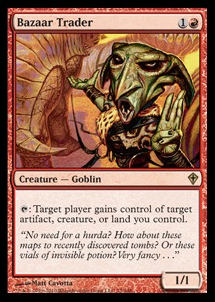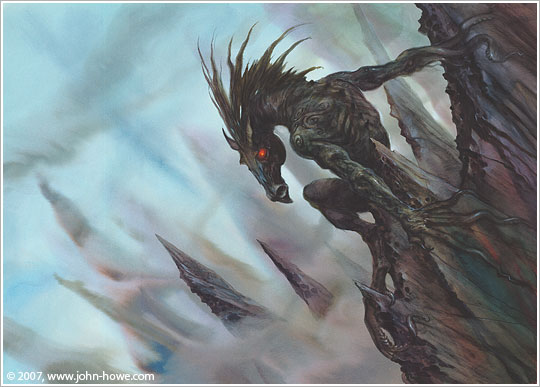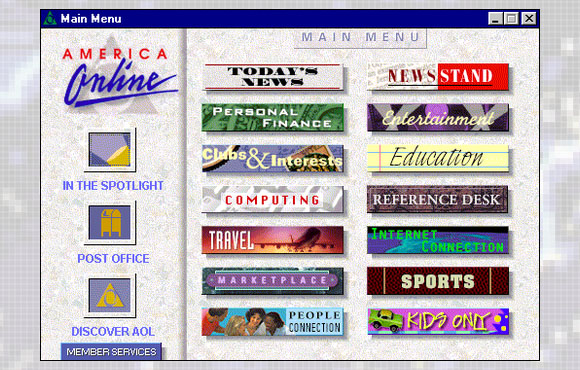Today I would like to give a few thoughts on my experiences with trading, both past and present. Consider what I’ve experienced in the past, how trading happens today and what the differences between past and current trading are, this will be more of an observation piece than anything so take it with a grain of salt. Not everyone might experience what I do when trading, and hopefully your trades are positive and productive. Certainly, mobile trading applications for phones have made trading the fairest it has ever been. However, there are downsides to this new approach to trading.
Is it worth it?
To start things off, I’ve been wondering whether or not trading is a even worthwhile endeavor for me anymore. I’ve traded plenty over the years but where has it ultimately lead me? I will honestly say that my personal collection has risen in value more on the backs of cards that I’ve picked up from vendors at larger events or online than it ever really has through trading. I admit that this may not be the case anymore, due the cat being out of the bag with Legacy (and even Vintage) staples seeing insanely large price increases based on the surge of popularity Magic has experienced in recent years, though Modern seems to be the next point of entry where buying staples before the seasonal spikes seems to be rewarding me plenty. Why spend a large amount of time trading when I have a good thing going?
Trading for speculative targets is really hard, as the people you’re trading with will almost always never have the exact card that you’re looking for. When you trade, you really only have the option of looking at exactly what they have, and then they need to want something that you have, and then the values of those items needs to be equal (heaven forbid it be even $2 off, otherwise no deal!). See how trading can lose its appeal pretty quickly for something like speculating?
Even for other times that I have traded, the three step process of:
1) I need to find something they have that I want at this point in time.
2) They need to find something I have that they want at this point in time.
3) Those needs/wants need to converge within at least $1.50-$2.00 of each other, and even that usually needs to be in my trading partner’s favor.
Trading isn’t easy anymore and I’m not the only one who thinks this way. Plenty of people who I regularly play with have basically sworn off all trading other than trading done between close friends that have interacted closely over a significant period of time. Maybe we’re all just old school, since for the large majority of our Magic-playing careers the mobile trading apps didn’t exist and so we didn’t really care if we lost a few dollars on a trade here and there. Ultimately though, I think that I and my friends are just going to have to suck it up, learn to adapt, and know how to maximize the usefulness of the mobile trading apps if we’re going to look into trading outside our merry band of travelers. The dollars and cents matter so much these days for trading, and learning how to navigate the close scenarios so that both parties are happy has become both a skill and a science.
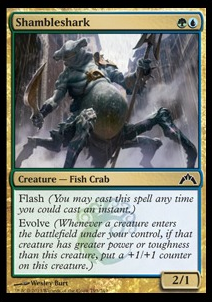 On the flip side of this coin, trading can be really easy too. Unfortunately, when it’s really easy you know that someone is getting ripped off, and the only people that are OK with this are the sharkiest of sharks. These are the nightmare situations that many of us have lived through, where for example at the beginning of our Magic playing days we want to trade some of those dumb rare lands we opened up for big creatures that are going to smash people’s faces in. Having almost no background on the secondary market, we figured that each rare is about equal to acquire so hey there pal, go right ahead and take this land off me that I had no intention of playing anyways! Shortly after while telling someone about this “deal” we realize how dumb it was and feel bad that we could have gotten probably twenty times the amount of cards for that land.
On the flip side of this coin, trading can be really easy too. Unfortunately, when it’s really easy you know that someone is getting ripped off, and the only people that are OK with this are the sharkiest of sharks. These are the nightmare situations that many of us have lived through, where for example at the beginning of our Magic playing days we want to trade some of those dumb rare lands we opened up for big creatures that are going to smash people’s faces in. Having almost no background on the secondary market, we figured that each rare is about equal to acquire so hey there pal, go right ahead and take this land off me that I had no intention of playing anyways! Shortly after while telling someone about this “deal” we realize how dumb it was and feel bad that we could have gotten probably twenty times the amount of cards for that land.
From this perspective, mobile trading apps have been a godsend. Players no longer need to worry that they’re getting ripped off if they are new to the game and want to start branching out into trading to expand their collection. Yet, what many newer players don’t realize is that almost all of the rares or cards that they want will eventually become bulk anyways once they rotate from Standard, so focusing on losing a few dollars is almost always going to be an exercise in futility in the long run. The only time where you really need to be concerned about losing dollars in a trade is if the card is a chase mythic / rare from the set that is going to have eternal playability. However, if a player is new they know nothing about eternal formats anyways! Catch-22 if I ever saw one.
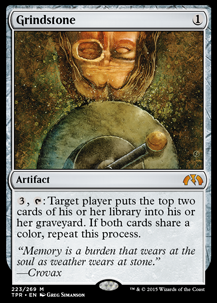 This particular scenario is what makes trading so grindy these days. I used to be able to trade with five people in the span of ten minutes. Now, I’m lucky if I can execute one trade in fifteen minutes between my partner finding something, looking up all the prices of everything they’re considering, and then making sure to equalize everything once the majority of the trade has been put into the trading apps. Not exactly an a great use of my time, and as the saying goes time is money.
This particular scenario is what makes trading so grindy these days. I used to be able to trade with five people in the span of ten minutes. Now, I’m lucky if I can execute one trade in fifteen minutes between my partner finding something, looking up all the prices of everything they’re considering, and then making sure to equalize everything once the majority of the trade has been put into the trading apps. Not exactly an a great use of my time, and as the saying goes time is money.
All in all, the adoption of mobile trading apps has been both a positive and a negative thing. It is positive in that both parties can verify that they are getting a fair deal, no matter what price sources you’re using for the trade. Are we using Star City prices for the trade? No problem, going from Star City to Star City is fine since even though they’re marked up in the first place the markup applies from bulk through the mythic rares. We using TCG Mid? Even better, the mid level prices better reflect condition and they can be adjusted accordingly on the applications.
Moving online?
I’m thinking that since in-person trading hasn’t been fruitful for me recently, that websites like Deckbox and Pucatrade can offer me easy ways of being able to trade online. They appear to have the best of both worlds – the convenience of trading whenever, having the best fair trade price, and having a ton of selection right? However, these services also have their issues.
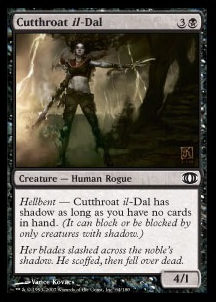 They are quite cutthroat. Think about this for a second – there are people out there who develop scripts specifically in order to maximize the number of trades that they see, in order to make sure that they are the first to be able to trade with a user if they have cards that they want. How is a human going to compete with something like that? You can’t, so the issue of finding someone to send cards to is going to be a big hurdle to overcome without knowing this. It might be a learning curve or whatever, so I’m sure that if you find a way to execute trades that works for you, you’ll get the hang of it and quickly become used to the vanishing wants of the system. However, I’m guessing that it is darn frustrating getting started with the services.
They are quite cutthroat. Think about this for a second – there are people out there who develop scripts specifically in order to maximize the number of trades that they see, in order to make sure that they are the first to be able to trade with a user if they have cards that they want. How is a human going to compete with something like that? You can’t, so the issue of finding someone to send cards to is going to be a big hurdle to overcome without knowing this. It might be a learning curve or whatever, so I’m sure that if you find a way to execute trades that works for you, you’ll get the hang of it and quickly become used to the vanishing wants of the system. However, I’m guessing that it is darn frustrating getting started with the services.
The online trading services also utilize the mail, which is going to involve USPS and beyond if we’re shipping internationally, so be prepared to wait up to a month to get those cards you want. Also, people that trade online seem to be extremely picky about condition, and why shouldn’t they? It’s advertised at a particular condition, and if it doesn’t meet that condition then the system or users should offer some type of recourse for the misleading listing. As many of us have experienced the definition of NM can actually vary widely from person to person. In other words, if it’s not “NM” there are going to be big problems and headaches for all. All in all, these complaints are pretty minor and once you set your expectations then the services are a good way to trade.
At the end of the day, the ultimate question is – Is it worth it to trade? For in person trades, I’m finding that for my needs that trading in person is becoming more and more of hassle. I’m generally only looking for specific cards, and my partners usually are too, and many times since they don’t have anything specific in their binder they usually refuse to trade anyways even if I become interested in smaller priced items that I wanted to pick up on a whim when I saw them that moment. Even when there is a trade to be made, the amount of time spent looking up the prices, accounting for conditioning, and then ensuring that everything is matched up according to whatever fair trade price is being used, simply wears me out. I feel exhausted when I finish a trade this way.
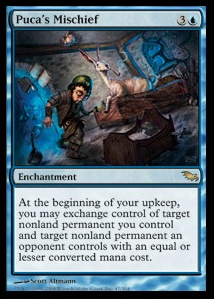 Online trading is where the new frontier is. I’m not sure if the issue of postage will ever be resolved, however the issues of finding the trades you want to make and to account for condition (PucaTrade, I’m specifically looking to you here) are becoming better and better every day. Condition is a simple policy change and site update, while the amount of trades is all based on user base and more users means that more trade opportunities are going to open up. I feel like right now, even with the issues that online trading has, that it won’t be nearly as draining on my brain and psyche as in person trading has become.
Online trading is where the new frontier is. I’m not sure if the issue of postage will ever be resolved, however the issues of finding the trades you want to make and to account for condition (PucaTrade, I’m specifically looking to you here) are becoming better and better every day. Condition is a simple policy change and site update, while the amount of trades is all based on user base and more users means that more trade opportunities are going to open up. I feel like right now, even with the issues that online trading has, that it won’t be nearly as draining on my brain and psyche as in person trading has become.
…
Where do you all stand on trading these days? Is my experience typical of most players / traders or are your trades a more smooth and pleasant experience? I know that many of us on MTGPrice are starting to hop on the PucaTrade bandwagon pretty hard, and it looks like many of our trades are being executed successfully there. What have been some negative experiences of PucaTrade that you’ve encountered, or feel like you might run into eventually? Do Deckbox or other online services compare in any way to PucaTrade?
